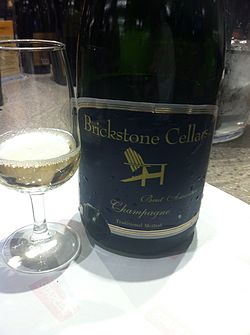Finger Lakes AVA
The Finger Lakes AVA is an American Viticultural Area located in Upstate New York, south of Lake Ontario. The Finger Lakes encompass eleven glacial lakes, but the area around Canandaigua, Keuka, Seneca, and Cayuga Lakes contain the vast majority of vineyard plantings in the AVA. Cayuga and Seneca Lakes each have their own American Viticultural Areas completely contained within the Finger Lakes AVA (Cayuga Lake AVA and Seneca Lake AVA). The Finger Lakes AVA includes 11,000 acres (4,452 ha) of vineyards and is the largest wine-producing region in New York State.
The Finger Lakes AVA wine region is often compared to the German wine regions along the Rhine river. Riesling, one of the most important commercial wine grape varieties grown in Germany, is also one of the most successful grape varieties grown in the Finger Lakes AVA. Viticulturists in the Finger Lakes region grow a wide variety of grapes besides Riesling, including other European Vitis vinifera grapes, native American grapes, as well as French-American hybrid varieties.
The deep lakes in the region help to moderate the local microclimate. Stored heat is released from the deep lakes during the winter, keeping the local climate mild relative to surrounding areas and preventing early season frost. Most vineyards are planted on steep hillsides overlooking the lakes, which help provide the vines with good drainage, better sun exposure, and a reduced risk of frost.
...
Wikipedia

